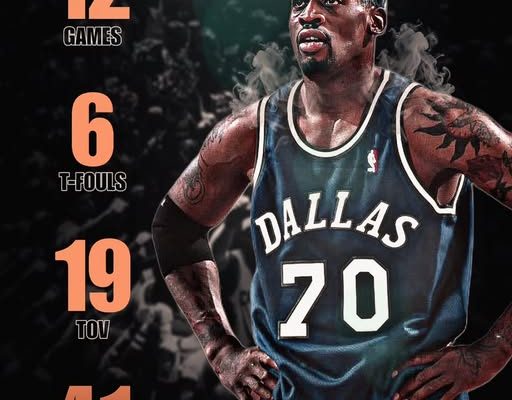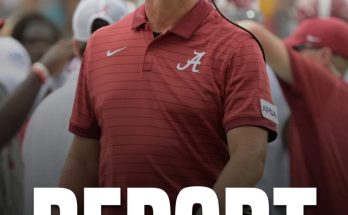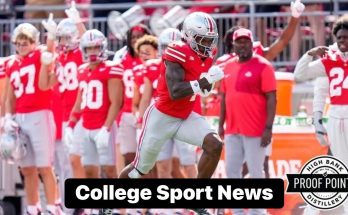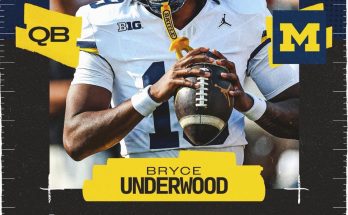Dennis Rodman’s 29-day stint with the Dallas Mavericks in 2000 was as chaotic and unfiltered as the man himself. It remains one of the strangest detours in NBA history—an intersection of flamboyance, dysfunction, and spectacle that captivated fans and left the franchise bewildered. Rodman, then 38 years old and long past his prime as a dominant rebounder and defensive savant, had one more shot to contribute to a team. Instead, he lit a firestorm that lasted just under a month, tallying 12 games, 6 technical fouls, 2 ejections, and an exit that remains the stuff of basketball legend.
By the time Rodman signed with the Mavericks in February 2000, he had already secured his place in the pantheon of NBA greats. A five-time NBA champion, two-time Defensive Player of the Year, and seven-time rebounding champion, his resume was unassailable. But his off-court antics and combustible personality had already pushed him to the margins of the league. After his brief tenure with the Lakers ended in 1999, many thought his career was over. Yet Mark Cuban, the newly minted owner of the Mavericks and an outsider himself in the NBA power structure, saw value in bringing in Rodman. Cuban had just taken over a floundering team and was eager to shake things up. Signing Rodman was part PR stunt, part basketball experiment, and all risk.
Cuban’s thinking, on some level, was understandable. The Mavericks had a young Dirk Nowitzki, the budding German forward who was still finding his place in the league. They had Steve Nash, a cerebral point guard with great vision, and Michael Finley, the established scorer. What they lacked was grit and toughness, especially on the defensive end. Rodman, even in his late 30s, was still in incredible shape and had a knack for getting under opponents’ skin. Cuban hoped Rodman could inject energy, rebounding, and edge into the team, while also drawing media attention and ticket sales.
Rodman made his debut on February 3, 2000, and the game went largely as expected—he grabbed boards, ran the floor, and clashed with officials. He wore jersey number 70, a random and quirky number that summed up his unpredictable nature. From the outset, though, it was clear that Rodman wasn’t interested in following the script. In his first game, he picked up a technical foul. Within days, he was clashing with referees, opponents, and even his own coaches. It wasn’t that he was necessarily ineffective—he still pulled down rebounds at a high rate—but his erratic behavior overshadowed any positive contributions.
Rodman’s tenure in Dallas quickly turned into a sideshow. He was fined and suspended multiple times during those 29 days, often for confrontations with referees or inappropriate behavior during games. Fans and media followed his every move, not for his basketball but for the carnival surrounding him. He dyed his hair different colors, skipped practices, and refused to wear team-issued warm-ups. Once, he left the arena before the game ended after being ejected, not even waiting to talk to coaches or teammates. The Mavericks’ locker room, once a developing space of camaraderie and growth, turned into a ticking time bomb of tension.
His clashes weren’t limited to the officials. There were frequent whispers of disagreements with then-coach Don Nelson. While Nelson was himself known as a nonconformist in basketball circles, even he couldn’t navigate the Rodman hurricane. Rodman reportedly disregarded team rules, often showed up late, and was said to be disengaged during team meetings and film sessions. The coaching staff had tried to impose boundaries early on, but Rodman, true to form, wasn’t about to be told what to do. He’d lived his entire career as a rebel and wasn’t going to change in his final act.
As Rodman’s antics escalated, it became clear that his presence was doing more harm than good. On February 23, during a game against the Denver Nuggets, Rodman received his second ejection in just 12 games. That game would prove to be his last in a Mavericks uniform. The final straw came not just from the technical fouls or the ejections, but from a broader pattern of insubordination and distraction. Mavericks management and Cuban, who had initially vouched for the forward and tried to be patient, eventually realized the experiment had failed. On March 8, the team announced that Rodman had been released. Just like that, his 29-day odyssey in Dallas came to an unceremonious end.
The numbers Rodman posted during the stretch weren’t awful. He averaged 14.3 rebounds per 36 minutes, a testament to his natural rebounding instincts and physical conditioning. But the box score couldn’t capture the disruption and chaos he brought. He accumulated six technical fouls—more than some players rack up in an entire season—and two ejections, both accompanied by spectacle and hostility. At times, it seemed as if Rodman was daring the league to banish him, taunting the very institution that had made him a global star. His attitude, while once tolerated due to his elite performance, had become a liability that even his considerable talent couldn’t justify.
Off the court, Rodman’s presence was equally volatile. He was seen partying across Dallas, frequenting nightclubs and making headlines in tabloids more than the sports pages. His fame transcended basketball, but in this setting, it distracted from a Mavericks team trying to rebuild its identity. Cuban, though willing to experiment, soon realized that Rodman’s stardom came at too high a cost for a developing team. The Rodman that had helped Chicago win three championships in the 1990s was gone; what remained was a shell of that player, still hungry for attention but unwilling to do the things necessary to help a team win.
Rodman never played in the NBA again after his Dallas stint. His career, marked by greatness and controversy in equal measure, ended not with a tribute or retirement tour but with a 29-day sideshow that burned brightly and then flamed out. It was fitting, in a way. Rodman had never followed anyone’s blueprint, never fit into neat categories. His short stint with Dallas was less about basketball and more about the collision between celebrity and sport, chaos and order, rebellion and structure.
In the years since, Rodman’s Mavericks episode has taken on a kind of mythical quality. It’s cited as a cautionary tale about bringing in volatile veterans, but also as an example of how even the most brilliant talents can spiral if not managed properly. Cuban has occasionally reflected on the move with a mixture of amusement and regret, acknowledging that while it brought attention to the team, it didn’t help on the court. For Rodman, the Dallas detour was one final act in a basketball life that often felt more like a rock tour than a sports career.
Looking back, it’s easy to focus on the absurdity of it all—the six technicals, the two ejections, the dyed hair, the mid-game exits, the locker room tension. But there’s something deeply human beneath it too. Rodman was always more than a basketball player; he was a man wrestling with identity, validation, and the tension between performance and authenticity. The Dallas stint exposed the limits of his ability to function in structured systems, especially once his prime had passed. It was a wild, frantic month that offered no redemption, no late-career revival, only an exclamation mark on a career that was anything but conventional.
Rodman’s legacy doesn’t hinge on his time in Dallas, but it does add a final chapter to his NBA journey—one filled with fire, conflict, and the unmistakable sound of a man going out on his own terms, for better or worse. His 29 days with the Mavericks weren’t about wins and losses, but about the unraveling of a complex figure who had long challenged the norms of his sport. It was Dennis Rodman, unfiltered and unchecked, on one last, unforgettable ride.



